W11: Evolution of Non-Terrestrial Networks toward 6G
WORKSHOP CO-CHAIRS:
Wen Tong: Huawei Technologies Co., Ltd., Canada.
Halim Yanikomeroglu: Carleton University, Canada.
Jun Wang: Huawei Technologies Co., Ltd., China.
KEYNOTE SPEAKERS:
Riccardo De Gaudenzi & Dr. Piero Angeletti: ESA/ESTEC, the Netherlands
Petar Popovski: Aalborg University, Aalborg, Denmark
Jiandong Li: Xidian University, China
Nicolas Chuberre: Thales Alenia Space, France
ABSTRACT: Non-terrestrial networks (NTN) are complimentary to terrestrial network and expected to provide eMBB services to the areas where there are limitations. This distinguishes them from the traditional satellite networks which only offer broadcast or narrowband internet services due to the insufficient processing capacity and the huge coverage area of a single satellite. Meanwhile, the commercial activities, along with the evolution of satellite communication protocols, are largely isolated from the cellular mobile communications for decades. As a result, the satellite industry did not benefit from economies of scale as the mobile industry did.
The emergence of low-cost mega LEO (Low Earth Orbit) constellations is a game changer, since (i) their lower orbit altitude ensures a low latency close to that of a global cellular network and (ii) the scale of constellation provides much higher area capacity than a traditional satellite network. Both are crucial to providing eMBB services. The integration of NTN into terrestrial cellular networks is another important enabler in achieving truly global coverage, since it facilitates seamless roaming between cellular and non-terrestrial networks with a single device. The above mentioned low latency, high capacity and seamless roaming will jointly contribute to a better user experience.
In this context, a set of enabling technologies need to be investigated, such as powerful RF modules, advanced air interface solutions, routing algorithms for time-varying topology, native integration of non-terrestrial and terrestrial networks, efficient manufacturing and in-orbit managements, etc.
This workshop aims to bring together researchers of relevant fields, to discuss the latest results and progress of NTN from different perspectives (academia, industry, operators, and regulatory authorities). These discussions will inspire the evolution of NTN toward 6G.
TECHNICAL PROGRAM COMMITTEE:
Tomaso de Cola, German Aerospace Center (DLR), Germany
Nicolas Chuberre, Thales Alenia Space, France
Riccardo De Gaudenzi, ESA/ESTEC, the Netherlands
Barry Evans, University of Surrey, UK
Xiqi Gao, Southeast University, China
Giovanni Giambene, University of Siena, Italy
Linling Kuang, Tsinghua University, China
Gunes Karabulut Kurt, Polytechnique de Montreal, Canada
Jiandong Li, Xidian University, China
Rong Li, Huawei Technologies Co., Ltd., China
Hejia Luo, Huawei Technologies Co., Ltd., China
Björn Ottersten, University of Luxembourg, Luxembourg
Athanasios D. Panagopoulos, National Technical University of Athens, Greece
Fernando Perez Fontan, University of Vigo, Spain
Ana Isabel Pérez-Neira, CTTC, Spain
Petar Popovski, Aalborg University, Aalborg, Denmark
Min Sheng, Xidian University, China
Guo Song, Hong Kong Polytechnic University, Hongkong
Alessandro Vanelli-Coralli, University of Bologna, Italy
Halim Yanikomeroglu, Carleton University, Canada
Kanglian Zhao, Nanjing University, China
CO-CHAIR DETAILS
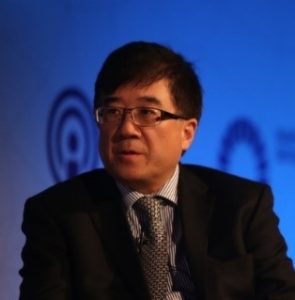 Dr. Wen Tong is the CTO, Huawei Wireless. He is the head of Huawei wireless research. In 2011, Dr. Tong was appointed the Head of Communications Technologies Labs of Huawei, currently, he is the Huawei 5G chief scientist and leads Huawei’s 10-year-long 5G wireless technologies research and development.
Dr. Wen Tong is the CTO, Huawei Wireless. He is the head of Huawei wireless research. In 2011, Dr. Tong was appointed the Head of Communications Technologies Labs of Huawei, currently, he is the Huawei 5G chief scientist and leads Huawei’s 10-year-long 5G wireless technologies research and development.
Prior to joining Huawei in 2009, Dr. Tong was the Nortel Fellow and head of the Network Technology Labs at Nortel. He joined the Wireless Technology Labs at Bell Northern Research in 1995 in Canada.
Dr. Tong is industry recognized leader in invention and standardization of advanced wireless technologies, he is the key contributor to 3GPP since its inception. Dr. Tong was elected as a Huawei Fellow and an IEEE Fellow. He was the recipient of IEEE Communications Society Industry Innovation Award for “the leadership and contributions in development of 3G and 4G wireless systems” in 2014, and IEEE Communications Society Distinguished Industry Leader Award for “pioneering technical contributions and leadership in the mobile communications industry and innovation in 5G mobile communications technology” in 2018. He is also the recipient of R.A. Fessenden Medal. For the past three decades, he had pioneered fundamental technologies from 1G to 5G wireless with more than 500 granted US patents.
Dr. Tong is a Fellow of Canadian Academy of Engineering, and he also serves as Board of Director of WiFi Alliance. He is based in Ottawa, Canada.
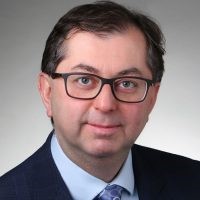 Professor Halim Yanikomeroglu (Fellow, IEEE) is currently a Professor with the Department of Systems and Computer Engineering, Carleton University, Ottawa, ON, Canada. His current research interest includes many aspects of 5G/6G wireless networks. His collaborative research with industry has resulted in 37 granted patents. He is a Fellow of the Engineering Institute of Canada (EIC) and the Canadian Academy of Engineering (CAE). He received several awards for his research, teaching, and service, including the IEEE Communications Society Wireless Communications Technical Committee Recognition Award, in 2018, and the IEEE Vehicular Technology Society Stuart Meyer Memorial Award, in 2020. He was the Technical Program Chair/Co-Chair of WCNC 2004, Atlanta, WCNC 2008, Las Vegas, and WCNC 2014, Istanbul, and the General Chair of IEEE VTC 2010-Fall, Ottawa, and VTC 2017-Fall, Toronto. He has also served as the Chair for the IEEE’s Technical Committee on Personal Communications. He is serving as the Chair for the IEEE Wireless Communications and Networking Conference (WCNC) Steering Committee. He is also a Distinguished Speaker of IEEE Communications Society and IEEE Vehicular Technology Society.
Professor Halim Yanikomeroglu (Fellow, IEEE) is currently a Professor with the Department of Systems and Computer Engineering, Carleton University, Ottawa, ON, Canada. His current research interest includes many aspects of 5G/6G wireless networks. His collaborative research with industry has resulted in 37 granted patents. He is a Fellow of the Engineering Institute of Canada (EIC) and the Canadian Academy of Engineering (CAE). He received several awards for his research, teaching, and service, including the IEEE Communications Society Wireless Communications Technical Committee Recognition Award, in 2018, and the IEEE Vehicular Technology Society Stuart Meyer Memorial Award, in 2020. He was the Technical Program Chair/Co-Chair of WCNC 2004, Atlanta, WCNC 2008, Las Vegas, and WCNC 2014, Istanbul, and the General Chair of IEEE VTC 2010-Fall, Ottawa, and VTC 2017-Fall, Toronto. He has also served as the Chair for the IEEE’s Technical Committee on Personal Communications. He is serving as the Chair for the IEEE Wireless Communications and Networking Conference (WCNC) Steering Committee. He is also a Distinguished Speaker of IEEE Communications Society and IEEE Vehicular Technology Society.
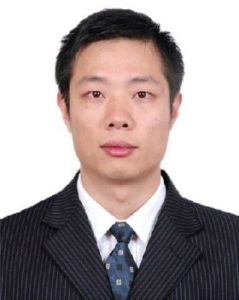 Jun Wang is currently serving as Senior Expert in Wireless Communication Lab of Huawei. He joint Huawei Technologies in 2006, and conducted various research on wireless communication and optical communication during the past two decades. He coordinated the channel coding research for 5G (NR) and successfully promoted the commercial use of the latest research results of coding area in Huawei. He was deeply involved in the standardization activity in 3GPP and CCSA, and contributed several key solutions in polar code design. He has received more than 200 patents during the research. His research interest includes areas of 6G wireless network. Currently, he is the leader of NTN communication system in Huawei.
Jun Wang is currently serving as Senior Expert in Wireless Communication Lab of Huawei. He joint Huawei Technologies in 2006, and conducted various research on wireless communication and optical communication during the past two decades. He coordinated the channel coding research for 5G (NR) and successfully promoted the commercial use of the latest research results of coding area in Huawei. He was deeply involved in the standardization activity in 3GPP and CCSA, and contributed several key solutions in polar code design. He has received more than 200 patents during the research. His research interest includes areas of 6G wireless network. Currently, he is the leader of NTN communication system in Huawei.
SPEAKER DETAILS
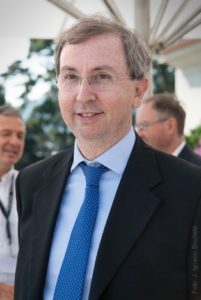 Riccardo De Gaudenzi (M’88–SM’97) received his Doctor Engineer degree (cum Laude) in electronic engineering from the University of Pisa, Italy in 1985, a PhD from the Technical University of Delft, The Netherlands in 1999. From 1986 to 1988 he was with the European Space Agency (ESA), Stations and Communications Engineering Department, Darmstadt (Germany) where he was involved in satellite Telemetry, Tracking and Control (TT&C) ground systems design and testing. In 1988, he joined ESA’s Research and Technology Centre (ESTEC), Noordwijk, The Netherlands where he has been covering several technical and managerial positions inside the Directorate of Technology, Engineering and Quality. He is currently the Head of the ESA’s Electrical Engineering Department. The department covers radio-frequency systems and payloads for navigation, telecommunication TT&C and Earth Observation, EEE components and microelectronics, data handling systems, power systems and energy sources, electromagnetic compatibility, space environments and their effects. He has been responsible for a large number of R&D activities for TT&C, Telecom and Navigation applications. In 1996 he spent one year with Qualcomm Inc., San Diego USA, in the Globalstar LEO project system group under an ESA fellowship. His current interest is mainly related with efficient digital modulation and multiple access techniques for fixed and mobile satellite services, synchronization topics, adaptive interference mitigation techniques and communication systems simulation techniques. He actively contributed to the development and the demonstration of the ETSI S-UMTS Family A, S-MIM, DVB-S2, DVB-S2X, DVB-RCS2 and DVB-SH standards. He has published more than 140 scientific papers and own more than 28 patents. From 2001 to 2005 he has been serving as Associate Editor for CDMA and Synchronization for IEEE Transactions on Communications and Associate Editor for Journal of Communications and Networks. He is co-recipient of the 2003 and 2008 Jack Neubauer Memorial Award Best Paper from the IEEE Vehicular Technology Society.
Riccardo De Gaudenzi (M’88–SM’97) received his Doctor Engineer degree (cum Laude) in electronic engineering from the University of Pisa, Italy in 1985, a PhD from the Technical University of Delft, The Netherlands in 1999. From 1986 to 1988 he was with the European Space Agency (ESA), Stations and Communications Engineering Department, Darmstadt (Germany) where he was involved in satellite Telemetry, Tracking and Control (TT&C) ground systems design and testing. In 1988, he joined ESA’s Research and Technology Centre (ESTEC), Noordwijk, The Netherlands where he has been covering several technical and managerial positions inside the Directorate of Technology, Engineering and Quality. He is currently the Head of the ESA’s Electrical Engineering Department. The department covers radio-frequency systems and payloads for navigation, telecommunication TT&C and Earth Observation, EEE components and microelectronics, data handling systems, power systems and energy sources, electromagnetic compatibility, space environments and their effects. He has been responsible for a large number of R&D activities for TT&C, Telecom and Navigation applications. In 1996 he spent one year with Qualcomm Inc., San Diego USA, in the Globalstar LEO project system group under an ESA fellowship. His current interest is mainly related with efficient digital modulation and multiple access techniques for fixed and mobile satellite services, synchronization topics, adaptive interference mitigation techniques and communication systems simulation techniques. He actively contributed to the development and the demonstration of the ETSI S-UMTS Family A, S-MIM, DVB-S2, DVB-S2X, DVB-RCS2 and DVB-SH standards. He has published more than 140 scientific papers and own more than 28 patents. From 2001 to 2005 he has been serving as Associate Editor for CDMA and Synchronization for IEEE Transactions on Communications and Associate Editor for Journal of Communications and Networks. He is co-recipient of the 2003 and 2008 Jack Neubauer Memorial Award Best Paper from the IEEE Vehicular Technology Society.
 Piero Angeletti (M’07–SM’13) received the Laurea degree in Electronics Engineering from the University of Ancona (Italy) in 1996, and the PhD in Electromagnetism from the University of Rome “La Sapienza” (Italy) in 2010. His 18 years experience in RF Systems engineering and technical management encompasses conceptual/architectural design, trade-offs, detailed design, production, integration and testing of satellite payloads and active antenna systems for commercial/military telecommunications and navigation (spanning all the operating bands and set of applications) as well as for multifunction RADARs and electronic counter measure systems. Dr. Angeletti is currently member of the technical staff of the European Space Research and Technology Center (ESTEC) of the European Space Agency, in Noordwijk (The Netherlands). He is heading the Radio Frequency Payloads and Technology Division of the ESA Directorate of Technology, Engineering and Quality (TEC), which is responsible for RF payloads, instruments and relevant technologies. In particular he oversees ESA R&D activities related to flexible satellite payloads, RF front-ends and on-board digital processors. Dr. Angeletti authored/co-authored over 300 technical reports, book chapters and papers published in peer reviewed professional journals and international conferences’ proceedings.
Piero Angeletti (M’07–SM’13) received the Laurea degree in Electronics Engineering from the University of Ancona (Italy) in 1996, and the PhD in Electromagnetism from the University of Rome “La Sapienza” (Italy) in 2010. His 18 years experience in RF Systems engineering and technical management encompasses conceptual/architectural design, trade-offs, detailed design, production, integration and testing of satellite payloads and active antenna systems for commercial/military telecommunications and navigation (spanning all the operating bands and set of applications) as well as for multifunction RADARs and electronic counter measure systems. Dr. Angeletti is currently member of the technical staff of the European Space Research and Technology Center (ESTEC) of the European Space Agency, in Noordwijk (The Netherlands). He is heading the Radio Frequency Payloads and Technology Division of the ESA Directorate of Technology, Engineering and Quality (TEC), which is responsible for RF payloads, instruments and relevant technologies. In particular he oversees ESA R&D activities related to flexible satellite payloads, RF front-ends and on-board digital processors. Dr. Angeletti authored/co-authored over 300 technical reports, book chapters and papers published in peer reviewed professional journals and international conferences’ proceedings.
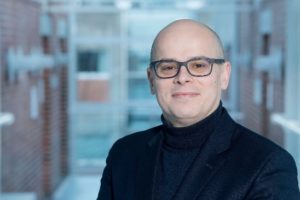 Petar Popovski is a Professor at Aalborg University, where he heads the section on Connectivity and a Visiting Excellence Chair at the University of Bremen. He received his Dipl.-Ing and M. Sc. degrees in communication engineering from the University of Sts. Cyril and Methodius in Skopje and the Ph.D. degree from Aalborg University in 2005. He is a Fellow of the IEEE. He received an ERC Consolidator Grant (2015), the Danish Elite Researcher award (2016), IEEE Fred W. Ellersick prize (2016), IEEE Stephen O. Rice prize (2018), Technical Achievement Award from the IEEE Technical Committee on Smart Grid Communications (2019), the Danish Telecommunication Prize (2020) and Villum Investigator Grant (2021). He is a Member at Large at the Board of Governors in IEEE Communication Society, Vice-Chair of the IEEE Communication Theory Technical Committee and IEEE TRANSACTIONS ON GREEN COMMUNICATIONS AND NETWORKING. He is currently an Area Editor of the IEEE TRANSACTIONS ON WIRELESS COMMUNICATIONS. Prof. Popovski was the General Chair for IEEE SmartGridComm 2018 and IEEE Communication Theory Workshop 2019. His research interests are in the area of wireless communication and communication theory. He authored the book “Wireless Connectivity: An Intuitive and Fundamental Guide”, published by Wiley in 2020.
Petar Popovski is a Professor at Aalborg University, where he heads the section on Connectivity and a Visiting Excellence Chair at the University of Bremen. He received his Dipl.-Ing and M. Sc. degrees in communication engineering from the University of Sts. Cyril and Methodius in Skopje and the Ph.D. degree from Aalborg University in 2005. He is a Fellow of the IEEE. He received an ERC Consolidator Grant (2015), the Danish Elite Researcher award (2016), IEEE Fred W. Ellersick prize (2016), IEEE Stephen O. Rice prize (2018), Technical Achievement Award from the IEEE Technical Committee on Smart Grid Communications (2019), the Danish Telecommunication Prize (2020) and Villum Investigator Grant (2021). He is a Member at Large at the Board of Governors in IEEE Communication Society, Vice-Chair of the IEEE Communication Theory Technical Committee and IEEE TRANSACTIONS ON GREEN COMMUNICATIONS AND NETWORKING. He is currently an Area Editor of the IEEE TRANSACTIONS ON WIRELESS COMMUNICATIONS. Prof. Popovski was the General Chair for IEEE SmartGridComm 2018 and IEEE Communication Theory Workshop 2019. His research interests are in the area of wireless communication and communication theory. He authored the book “Wireless Connectivity: An Intuitive and Fundamental Guide”, published by Wiley in 2020.
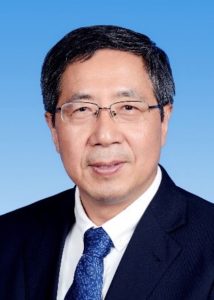 Jiandong Li (M’96-SM’05-F’21) received the B.E., M.S. and Ph.D. degrees in Communications Engineering from Xidian University, Xi’an, China, in 1982, 1985 and 1991 respectively. He has been a faculty member of the school of Telecommunications Engineering at Xidian University since 1985, where he is currently a Changjiang professor and vice director of the academic committee of State Key Laboratory of Integrated Service Networks. Prof. Li is a Fellow of IEEE, CIC and CIE. He was a visiting professor to the Department of Electrical and Computer Engineering at Cornell University from 2002-2003. He served as the General Vice Chair for ChinaCom 2009 and TPC Chair of IEEE ICCC 2013. He was awarded as Distinguished Young Researcher from NSFC and Changjiang Scholar from Ministry of Education, China, respectively. His major research interests include Wireless mobile communication, Cognitive and self-organizing wireless networks, Resource managements for Heterogeneous wireless networks.
Jiandong Li (M’96-SM’05-F’21) received the B.E., M.S. and Ph.D. degrees in Communications Engineering from Xidian University, Xi’an, China, in 1982, 1985 and 1991 respectively. He has been a faculty member of the school of Telecommunications Engineering at Xidian University since 1985, where he is currently a Changjiang professor and vice director of the academic committee of State Key Laboratory of Integrated Service Networks. Prof. Li is a Fellow of IEEE, CIC and CIE. He was a visiting professor to the Department of Electrical and Computer Engineering at Cornell University from 2002-2003. He served as the General Vice Chair for ChinaCom 2009 and TPC Chair of IEEE ICCC 2013. He was awarded as Distinguished Young Researcher from NSFC and Changjiang Scholar from Ministry of Education, China, respectively. His major research interests include Wireless mobile communication, Cognitive and self-organizing wireless networks, Resource managements for Heterogeneous wireless networks.
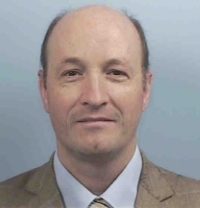 Nicolas Chuberre graduated from “Ecole Supérieure d’Ingénieur en Electronique et Electrotechnique” in Paris in 1988. Previously with Nokia & Alcatel Mobile phones to design signal processing algorithms, Medium Access Control protocols and test tools for 2G cellular handsets & systems, he joined Thales Alenia Space to manage the development of satellite payload equipment and the design of Satellite Communication Systems (GEO and Non GEO).
Nicolas Chuberre graduated from “Ecole Supérieure d’Ingénieur en Electronique et Electrotechnique” in Paris in 1988. Previously with Nokia & Alcatel Mobile phones to design signal processing algorithms, Medium Access Control protocols and test tools for 2G cellular handsets & systems, he joined Thales Alenia Space to manage the development of satellite payload equipment and the design of Satellite Communication Systems (GEO and Non GEO).
He has successfully initiated and led several European collaborative research projects on SatComs. Nicolas is currently defining and developing Satellite Solutions for 5G. At 3GPP (www.3gpp.org), he is the lead representative of Thales in TSG RAN and rapporteur for standardisation items on satellite in 5G. He is the founder and moderator of the Satellite Standardisation Interest Group (SSIG). Since 2006, he chairs the Satellite Communication and Navigation working group at ETSI (www.etsi.org).
Workshop Program
Part 1 – Opening / Welcome
Part 2 – Technical Paper – Application of HBF with Adaptive Port Mapping for LEO Satellite Communication Systems
Part 3 – Technical Paper – Beam Switching Solutions for Beam-Hopping Based LEO System
Part 4 – Technical Paper – Centralized Gateway Concept for Precoded Multi-beam GEO Satellite Networks
Part 5 – Technical Paper – Deep Reinforcement Learning Based Power Allocation for High Throughput Satellites
Part 6 – Technical Paper – Exploiting Edge Computing in Internet of Space Things Networks: Dynamic and Static Server Placement
Part 7 – Technical Paper – Key Competence Analysis of Non-Terrestrial Network-Based Cellular Backhaul
Part 8 – Technical Paper – Massive MIMO Downlink Transmission for LEO Satellite Communications
Part 9 – Technical Paper – On the beamforming of LEO earth fixed cells
Part 10 – Technical Paper – Resource Scheduling and Offloading Strategy Based on LEO Satellite Edge Computing
Part 11 – Technical Paper – Techno-Economic Design Aspects of Satellite Mega-Constellations for 6G Services
Part 12 – Closing Remarks
